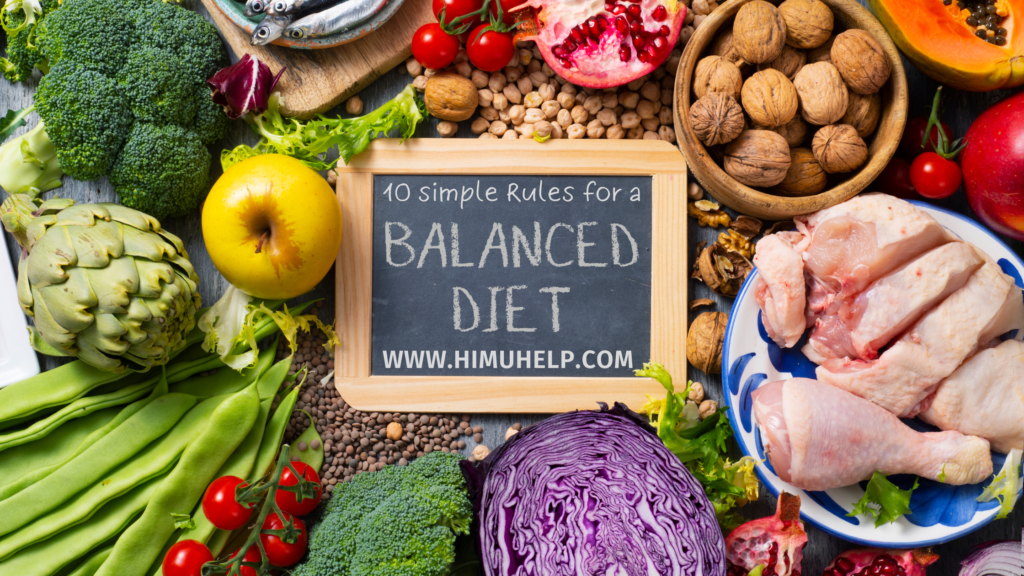
Maintaining a balanced diet is one of the best things you can do for your health. It’s not about following strict rules or giving up your favorite foods—it’s about eating in a way that provides your body with the nutrients it needs while still enjoying what you eat. Here are ten simple rules to help you achieve a balanced diet and a healthier lifestyle. Read Healthy Eating Guide
Rule 1: Eat Whole, Unprocessed Foods
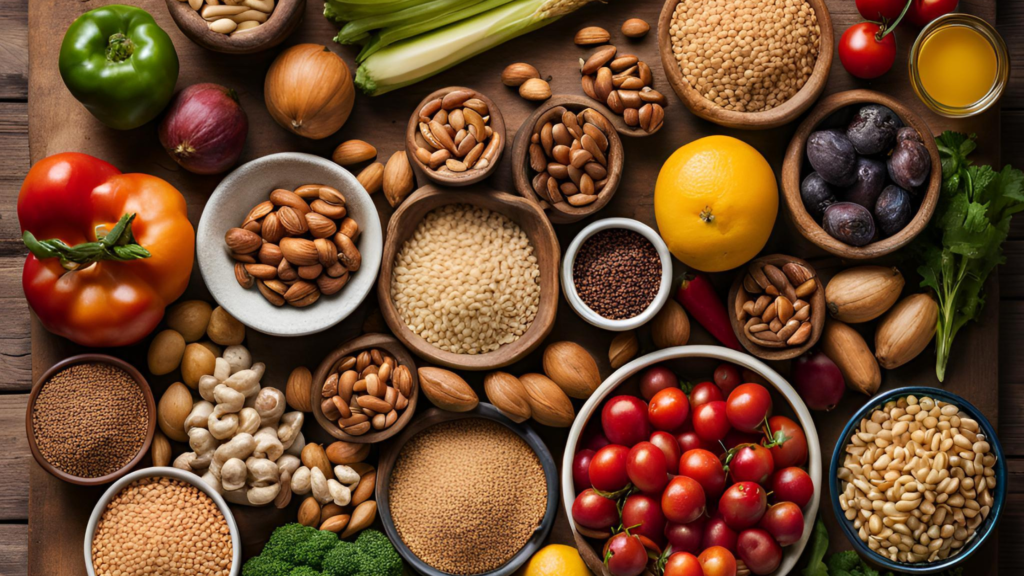
Whole foods are the foundation of a healthy diet. These are foods that are minimally processed and as close to their natural state as possible, such as fruits, vegetables, whole grains, nuts, seeds, and lean proteins. Whole foods are nutrient-dense, offering vitamins, minerals, and fiber that processed foods often lack. Unlike packaged or fast foods, they don’t contain artificial additives, excess sugars, or unhealthy fats that can harm your body over time.
Including whole foods in your diet boosts energy levels, improves digestion, and strengthens your immune system. To make this a habit, start small. Swap white bread for whole-grain options, choose fresh fruit instead of sugary snacks, and opt for unprocessed proteins like chicken or fish. Gradually reducing processed food intake will make your transition smoother.
Whole foods are versatile and easy to incorporate into meals. For example, add colorful veggies to your stir-fries, top your cereal with fresh fruits, or snack on nuts instead of chips. The goal is to prioritize natural, nutrient-packed options for a healthier, more balanced diet.
Rule 2: Stay Hydrated

Water is the essence of life and a vital part of a balanced diet. It keeps your body functioning optimally, aids in digestion, and regulates body temperature. Drinking enough water also helps flush out toxins, keeps your skin glowing, and supports healthy metabolism. Dehydration can lead to fatigue, headaches, and difficulty concentrating.
The general guideline is to drink at least 8 glasses (about 2 liters) of water daily, but individual needs vary depending on age, activity level, and climate. If plain water feels bland, try infusing it with slices of lemon, cucumber, or mint for a refreshing twist. Herbal teas and water-rich foods like cucumbers, watermelon, and oranges also contribute to your hydration.
Keep a reusable water bottle handy to ensure you drink throughout the day, especially during workouts or on hot days. Avoid sugary sodas and energy drinks as they can lead to dehydration and add unnecessary calories. Staying hydrated doesn’t just quench your thirst—it keeps your body and mind in top shape.
Rule 3: Balance Your Macronutrients
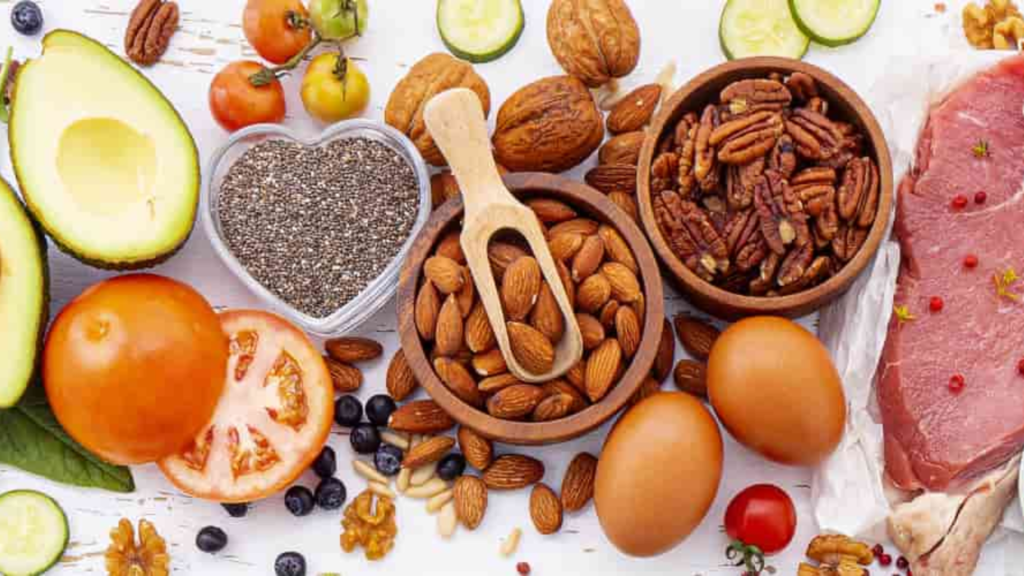
Your diet should include the right balance of carbohydrates, proteins, and fats, known as macronutrients. Each plays a critical role in maintaining your health. Carbohydrates are your body’s primary energy source, while proteins repair tissues and build muscles. Healthy fats, like those found in avocados, nuts, and olive oil, support brain health and help absorb vitamins.
To achieve this balance, aim to make each meal a mix of these macronutrients. For example, pair whole-grain pasta (carbs) with grilled chicken (protein) and a drizzle of olive oil (fat). Avoid extreme diets that cut out entire macronutrient groups, as they can deprive your body of essential nutrients.
Start reading food labels to understand macronutrient content, and focus on quality over quantity. Choose complex carbs like quinoa over refined options, lean proteins over fatty cuts, and unsaturated fats over trans fats. A well-balanced macronutrient intake fuels your body for physical and mental activities, keeping you energized and focused.
Rule 4: Watch Your Portion Sizes
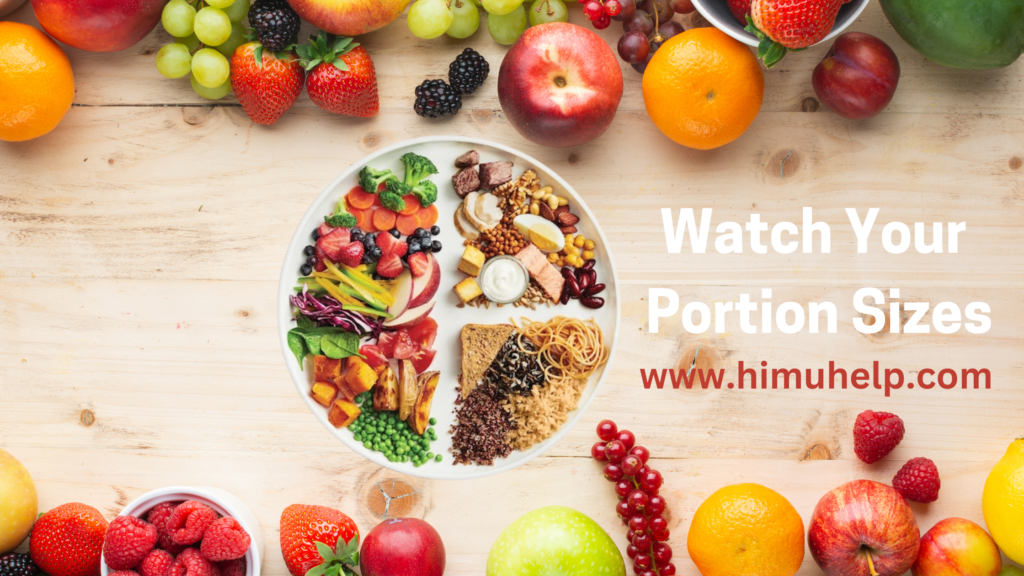
Portion control is an essential part of maintaining a balanced diet. Even when eating healthy foods, consuming too much can lead to weight gain and disrupt your body’s energy balance. It’s not just about what you eat—it’s also about how much.
One way to manage portion sizes is to use smaller plates or bowls, which naturally encourage you to eat less food. Understanding serving sizes is also crucial. For example, a serving of protein is roughly the size of your palm, and a serving of carbs like rice or pasta should fit within a cupped hand.
Mindful eating is another helpful strategy. Pay attention to your hunger cues and stop eating when you feel satisfied, not overly full. Avoid distractions like watching TV while eating, as this can lead to overeating. Preparing your meals at home allows you to control portion sizes better than dining out, where servings are often oversized.
Practicing portion control doesn’t mean depriving yourself—it means giving your body the right amount of fuel it needs. Over time, your body will adjust, and you’ll naturally find satisfaction in smaller, more appropriate portions.
Rule 5: Limit Processed Foods
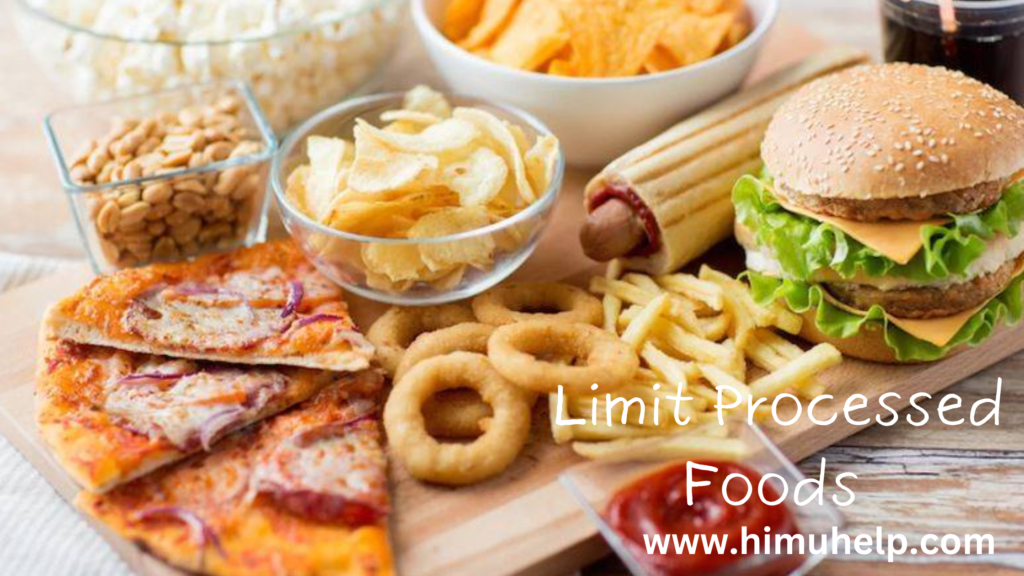
Processed foods are convenient, but they often come with a hidden cost to your health. These foods are typically high in unhealthy fats, added sugars, sodium, and artificial ingredients, which can lead to long-term health issues like obesity, diabetes, and heart disease.
Examples of processed foods include chips, sugary cereals, frozen meals, and sodas. While it’s okay to indulge occasionally, making these items a regular part of your diet can have negative consequences. Instead, focus on whole, minimally processed alternatives. For instance, swap potato chips for air-popped popcorn or roasted nuts, and choose homemade meals over fast food.
Start by gradually cutting back on processed snacks and replacing them with fresh fruits, vegetables, or yogurt. Learning to read nutrition labels can also help you make informed decisions. Look for items with fewer ingredients and avoid those with excessive sugars and artificial additives.
Reducing your dependence on processed foods not only improves your physical health but also enhances your energy levels and mental clarity. It’s a small change that makes a significant difference over time.
Rule 6: Eat More Fruits and Vegetables

Fruits and vegetables are the cornerstone of a balanced diet. Packed with essential vitamins, minerals, fiber, and antioxidants, they support nearly every function in your body, from boosting your immune system to improving digestion.
Aim to fill half your plate with colorful fruits and vegetables at each meal. Each color offers unique health benefits—for example, orange fruits like carrots are rich in beta-carotene, while leafy greens are high in iron and calcium.
Fresh produce is best, but frozen or canned options without added sugars or salt are good alternatives. Incorporate vegetables into your meals by adding spinach to smoothies, roasting broccoli as a side dish, or snacking on baby carrots. Fruits can be enjoyed as a standalone snack, a topping for cereal, or blended into smoothies.
Regular consumption of fruits and vegetables reduces the risk of chronic diseases, including heart disease and cancer. Plus, their natural sweetness and vibrant flavors make them a satisfying addition to any meal.
Rule 7: Cut Down on Sugar and Salt

Excess sugar and salt in your diet can lead to serious health issues like obesity, diabetes, high blood pressure, and heart disease. The key to a balanced diet is moderating these two ingredients.
Added sugars are hidden in many foods, including flavored yogurts, sauces, and beverages. To reduce sugar intake, opt for unsweetened alternatives, use natural sweeteners like honey or maple syrup sparingly, and satisfy your sweet tooth with fresh fruits.
Similarly, excessive salt is common in processed and restaurant foods. Too much sodium can strain your heart and kidneys, leading to water retention and high blood pressure. Instead of reaching for the salt shaker, season your food with herbs, spices, lemon juice, or vinegar for added flavor.
Making small changes, like cooking more meals at home and reading nutrition labels, can significantly reduce your intake of sugar and salt. These steps not only improve your physical health but also enhance the flavors of the natural ingredients in your meals.
Rule 8: Don’t Skip Breakfast

Breakfast is often referred to as the most important meal of the day, and for good reason. It provides the energy and nutrients your body needs to kickstart the day and maintain focus and productivity. Skipping breakfast can lead to low energy levels, irritability, and unhealthy food cravings later in the day.
A balanced breakfast should include a mix of macronutrients: carbohydrates for energy, proteins for muscle repair, and healthy fats to keep you satiated. For example, whole-grain toast with avocado and a boiled egg or oatmeal topped with fresh fruits and nuts are excellent choices. If you’re in a rush, a smoothie with spinach, banana, Greek yogurt, and a handful of almonds can be a quick and nutritious option.
Skipping breakfast often leads to overeating during lunch or snacking on unhealthy foods. Moreover, studies suggest that regular breakfast eaters have better concentration, improved metabolism, and a reduced risk of chronic diseases.
Making time for breakfast doesn’t need to be complicated. Preparing ingredients the night before or opting for simple, nutrient-dense options can help you maintain this healthy habit. Starting your day with a wholesome meal sets the tone for balanced eating throughout the day. Discover the Coffee Formula for a Faster Metabolism
Rule 9: Eat Regularly
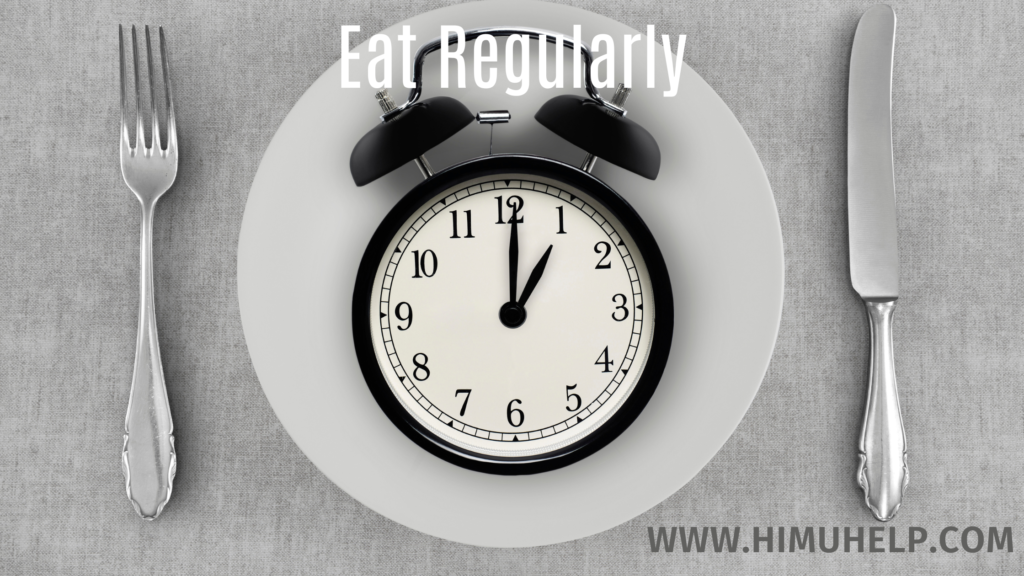
Eating regularly is vital for maintaining stable blood sugar levels, preventing energy crashes, and avoiding overeating. When you go too long without eating, your body experiences a dip in blood sugar, leading to irritability, fatigue, and cravings for unhealthy, high-calorie foods.
A good routine involves three balanced meals and two healthy snacks per day. Eating at consistent times helps regulate your metabolism and prevents the urge to binge later. For instance, having breakfast around 8 a.m., lunch at noon, and dinner at 6 p.m., with a mid-morning and mid-afternoon snack, can create a sustainable rhythm for your body.
Choose nutrient-rich snacks such as a handful of nuts, a piece of fruit, or yogurt instead of processed options like chips or cookies. These healthy snacks will keep you full between meals and provide steady energy.
Regular eating also supports digestive health and helps your body effectively absorb nutrients. By planning your meals and snacks in advance, you can avoid the temptation of reaching for unhealthy options and maintain a consistent, balanced diet.
Rule 10: Listen to Your Body

One of the most important aspects of maintaining a balanced diet is learning to listen to your body. Your body naturally signals when it’s hungry or full, but modern habits like fast eating and stress can often override these cues.
Start by eating slowly and paying attention to how you feel during meals. It takes about 20 minutes for your brain to register fullness, so rushing through meals can lead to overeating. Practice mindful eating by focusing on the flavors, textures, and smells of your food rather than distractions like TV or your phone.
Understanding the difference between true hunger and emotional cravings is also crucial. Hunger is a physical need for food, while cravings are often triggered by stress, boredom, or emotions. If you feel hungry shortly after eating, try drinking a glass of water or engaging in a different activity to determine if it’s a craving.
Tuning into your body’s natural signals will help you develop a healthier relationship with food. This approach encourages balance and helps prevent overeating, leading to a more satisfying and sustainable way of eating.
Conclusion
By following these 10 simple rules, you can take significant steps toward a balanced and healthier diet. Remember, it’s not about perfection but progress. Small, consistent changes in your eating habits will lead to long-term benefits for your body and mind. Start today, and enjoy the journey to a more nutritious and fulfilling lifestyle!
FAQs
1. What is a balanced diet?
A balanced diet includes a variety of foods that provide essential nutrients in the right proportions carbohydrates, proteins, fats, vitamins, minerals, and water. It ensures your body gets the fuel it needs to function effectively.
2. How do I start eating a balanced diet?
Start by incorporating more whole, unprocessed foods into your meals. Focus on including fruits, vegetables, lean proteins, whole grains, and healthy fats. Gradually reduce processed foods, sugar, and excess salt.
3. Can I follow a balanced diet on a budget?
Yes! Buy seasonal fruits and vegetables, choose whole grains like rice or oats, and purchase protein sources like beans, lentils, and eggs. Preparing meals at home can also save money while ensuring quality.
4. How does portion control help with a balanced diet?
Portion control prevents overeating, helps maintain a healthy weight, and ensures that you consume fewer calories while still meeting your nutritional needs.
5. Is it okay to indulge occasionally?
Absolutely! A balanced diet allows for flexibility. Enjoy your favorite treats in moderation to maintain a sustainable and enjoyable eating plan.